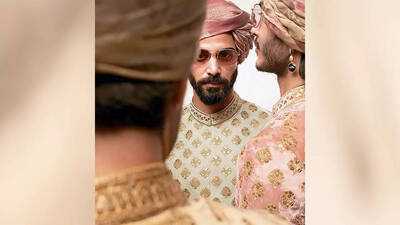
In 2017, Sabyasachi unveiled his Udaipur collection – inspired by the Maharanis in their French chiffons and pearls, botanical prints and European colour palettes. The men, said the designer in his note, exuded “quiet arrogance” as they stood tall – literally and otherwise, in their sherwanis and turbans and luxurious jewellery. All photographed against the stunning palaces of Rajasthan. The designer has since then featured male models in bridal attire- wearing variations of the turban – with jewelled sarpench, earrings, feathers and crescents, gossamer fabric dipped in pastel shades. Paired with his signature sherwanis and kurtas, the turbaned men have been a visual, cultural mnemonic for the quintessential Indian luxury experience. An idea that has been embraced by the hospitality industry in its many avatars.
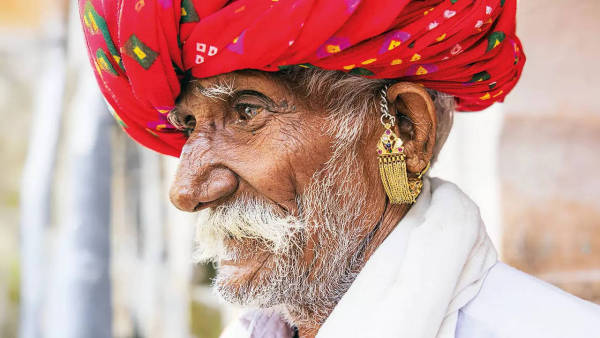 Gatekeepers of the royal Indian experience
Gatekeepers of the royal Indian experience
Legend goes, in 1903 when Jamsetji Tata was looking for a uniform for the doormen of the Taj Mahal Palace Hotel, he wanted them to look like royalty. As a snub to the British, of course. The tall, turbaned man (Jasminder Singh, aka ‘Daddy G’ who followed his father into the job) greeting guests with a namaste, is the most photographed feature of the iconic hotel, wrote The New York Times, talked about how the tall men in their lush moustaches, and proud turbans, have become a staple at heritage and legacy Indian properties around the world.
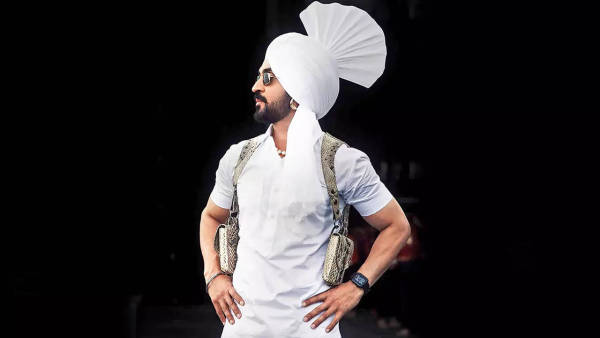 With a comic touch
With a comic touch
In the 1930s, Herge’s intrepid adventurer, Tintin, is introduced to the royal Indian universe in Cigars of the Pharaoh and The Blue Lotus. The Oriental experience is incomplete without the terrific panels that detail the royal Indian courts, lorded by the Maharaja of Gaipajama and his liveried men and mantris. Herge did not hold back – in his near-accurate description of the men in turbans, sherwanis, achkans and cummerbunds – the West was in awe of the sartorial splendour on display.
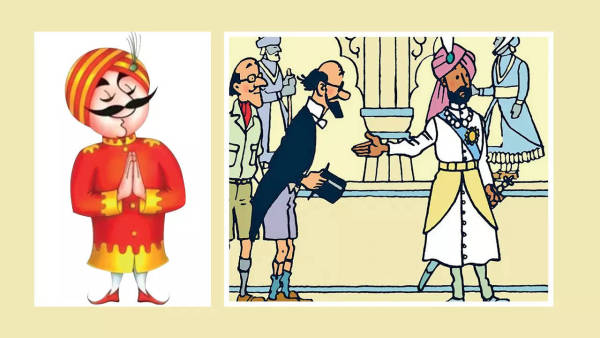 The OG Maharaja of the hospitality biz
The OG Maharaja of the hospitality biz
In 1946, Air India was looking for a mascot for the airline that would wear its Indianness on its wings. The then-commercial director of the airline, Bobby Kooka, and Umesh Rao, an artist with the ad agency accidently created a character that was a mix of the royal servers of yore and the Maharajas who employed them. Kooka said: “We call him a Maharajah for want of a better description. But his blood isn’t blue. He may look like royalty, but he isn’t royal.” Initially designed only for the airline’s memo-pads, the Maharajah went through several makeovers and eventually retired. But the likeable man lives on as a caricature on teacups and martini stirrers in the premium lounges and crockery.
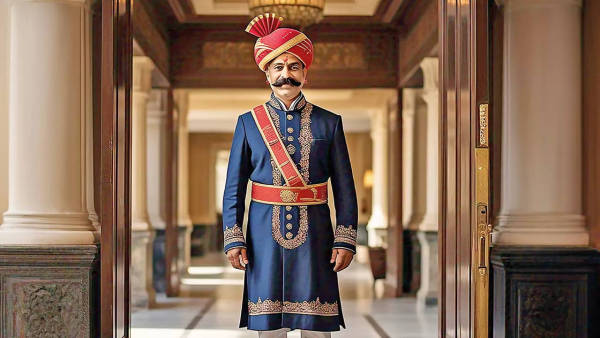
 In 2017, Sabyasachi unveiled his Udaipur collection – inspired by the Maharanis in their French chiffons and pearls, botanical prints and European colour palettes. The men, said the designer in his note, exuded “quiet arrogance” as they stood tall – literally and otherwise, in their sherwanis and turbans and luxurious jewellery. All photographed against the stunning palaces of Rajasthan. The designer has since then featured male models in bridal attire- wearing variations of the turban – with jewelled sarpench, earrings, feathers and crescents, gossamer fabric dipped in pastel shades. Paired with his signature sherwanis and kurtas, the turbaned men have been a visual, cultural mnemonic for the quintessential Indian luxury experience. An idea that has been embraced by the hospitality industry in its many avatars.
In 2017, Sabyasachi unveiled his Udaipur collection – inspired by the Maharanis in their French chiffons and pearls, botanical prints and European colour palettes. The men, said the designer in his note, exuded “quiet arrogance” as they stood tall – literally and otherwise, in their sherwanis and turbans and luxurious jewellery. All photographed against the stunning palaces of Rajasthan. The designer has since then featured male models in bridal attire- wearing variations of the turban – with jewelled sarpench, earrings, feathers and crescents, gossamer fabric dipped in pastel shades. Paired with his signature sherwanis and kurtas, the turbaned men have been a visual, cultural mnemonic for the quintessential Indian luxury experience. An idea that has been embraced by the hospitality industry in its many avatars.



